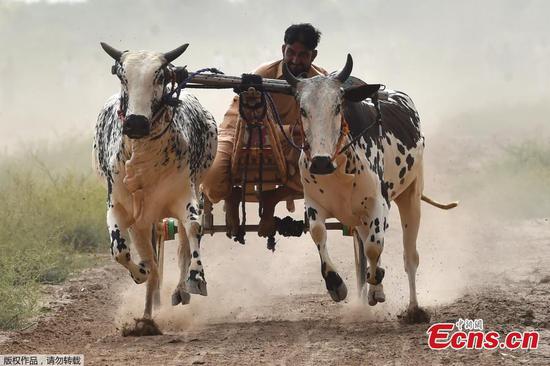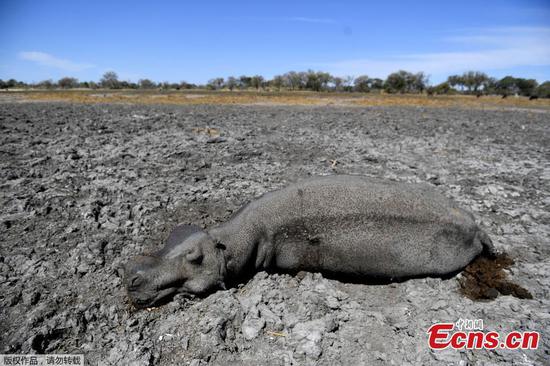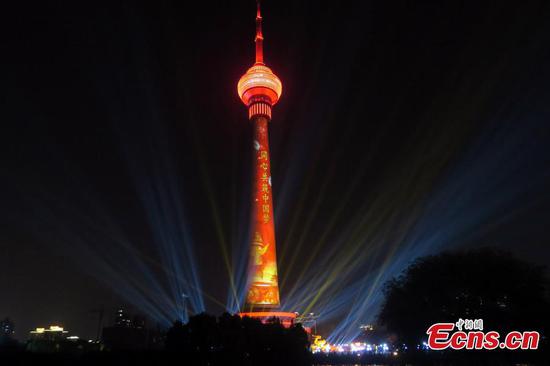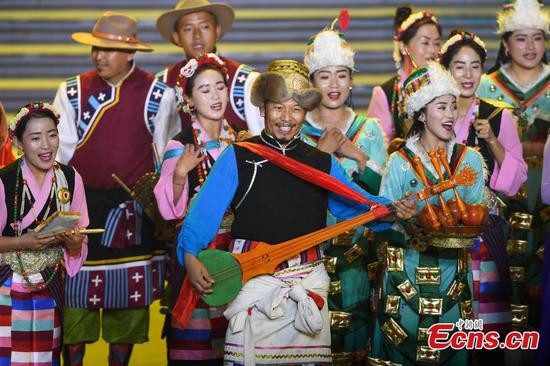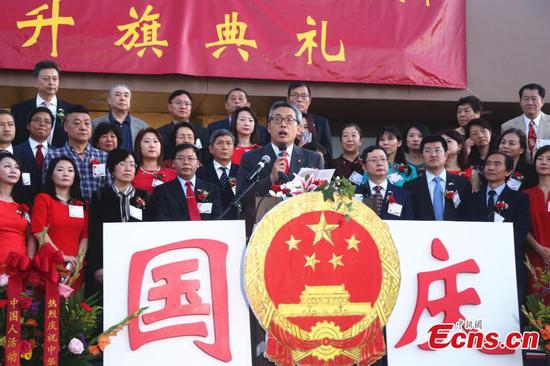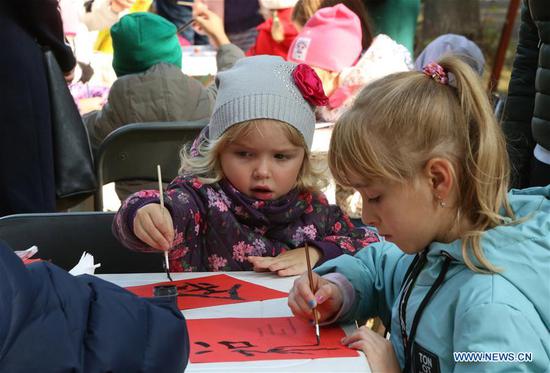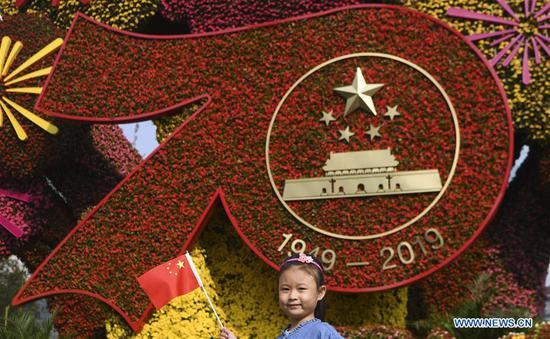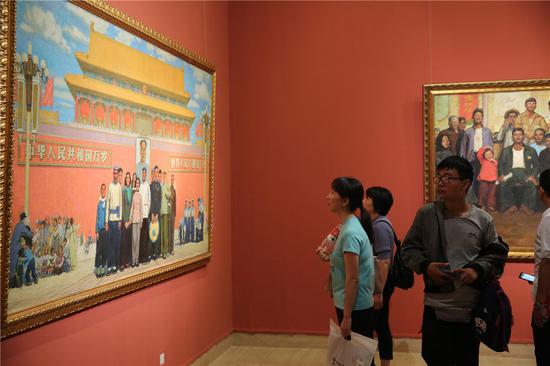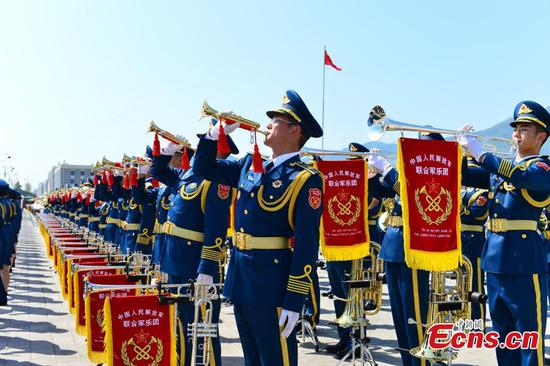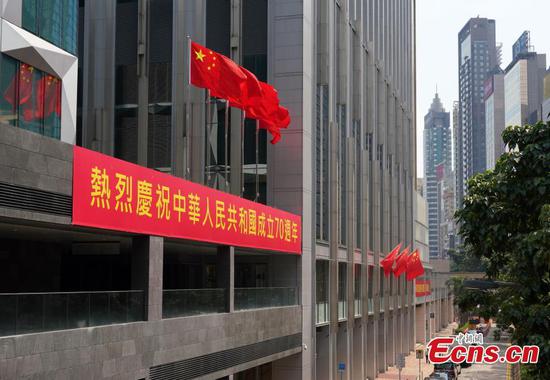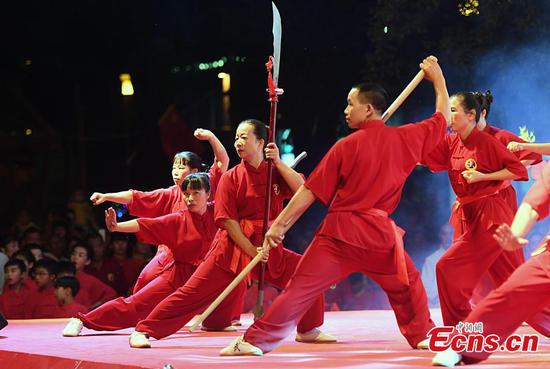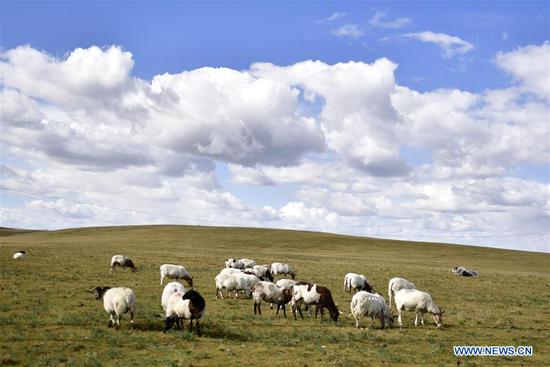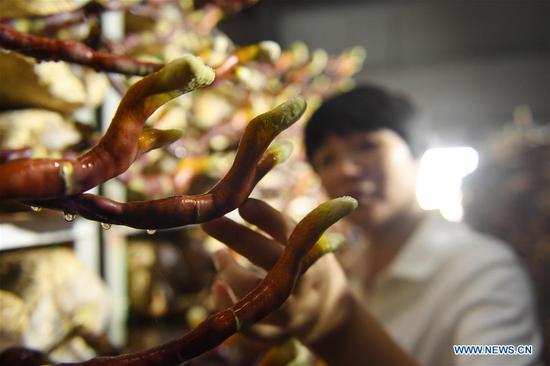The city of Shihezi is a sprawling green area home to 670,000 people. As September ends and the harvest season arrives, farmers are ready to reap the large cotton fields on its outskirts.
Shihezi is a young city, established in the 1950s about 150 kilometers northwest of Urumqi, the capital of northwestern China's Xinjiang Uygur autonomous region. It is one of nine bustling cities that have risen from the bleak Gobi Desert.
About 1,600 km away, in the southwest of the region, Kashgar, an ancient Silk Road city, maintains the charm and authenticity of a 2,000-year-old town.
The contrasting landscapes mark the vastness of Xinjiang, which covers about one-sixth of China's land territory, and epitomizes how Xinjiang has progressed both economically and culturally.
This progress was made possible by the peaceful liberation of the region, the 70th anniversary of which was celebrated on Sept 25.
In 1949, the liberation struggle gained momentum across the country and the revolutionary struggle of people of all ethnic groups surged forward in Xinjiang. Tao Zhiyue, garrison commander of Xinjiang, and Burhan, chairman of the Xinjiang provincial government, renounced their allegiance to the Kuomintang and welcomed in the First Army Group of the First Field Army of the Chinese People's Liberation Army, led by General Wang Zhen.
From then on, Xinjiang embarked upon a journey of increasing prosperity, unity and stability.
As proof of the general stability and sound development momentum, not a single terrorist attack has occurred in Xinjiang over the past three years.
Social development
In the years that immediately followed its peaceful liberation, Xinjiang's average life expectancy was 30 years. The figure reached 72.35 years last year, with 25 million people living in 14 prefectures and cities in the region.
Before liberation, most arable land in Xinjiang was seized by a handful of landlords, leaving very little to the majority of farmers. Serfdom existed in southern Xinjiang, where overlords owned their serfs from head to toe.
Samsak, a herder in Kashgar, owned nothing more than the clothes he was wearing when PLA soldiers liberated him. His name, which means garlic in the Uygur language, was given by his master. From the age of 17 to the age of 60, he had done nothing but herd sheep, yet he owned none of them.
Through a democratic reform that toppled the old system, ordinary people like Samsak received their own land and sheep and became masters of their own fate.
In 1955, the system of regional ethnic autonomy was implemented in Xinjiang, offering a further guarantee to the people of Xinjiang in exercising their right as masters of their land.
In 1950, Xinjiang had only 3,000 ethnic minority cadres. By 2018, there were 428,000 ethnic minority cadres, making up 50.3 percent of the total in Xinjiang, with over half of them women.
Xinjiang has seen improved living standards for its people over the past seven decades. Public services such as free health checkups for all, critical illness insurance, free preschool education for rural children and housing projects for herders and farmers have increased people's sense of fulfillment. Tap water, stable power supply and roads have been provided to herders living in the most remote border areas.
During an inspection tour of Xinjiang in 2014, President Xi Jinping called for steadfast efforts to attain leapfrog development while stressing efforts must be made to improve people's livelihoods and win the support of the people.
Living on the edge of the Taklimakan Desert in Hotan, Tursuntoht Jume, 61, cherishes the tap water supply that was only recently installed in his home.
"For half of my life, I had been drinking from the pond," he said. "Drinking directly from the tap, this makes me happier than anything else."
Vibrant economy
Spotless packaging lines are in full operation at a Xinjiang Fruits Products Group factory in Urumqi. Dried dates, walnuts and raisins produced in Xinjiang are sold across the country and overseas.
Thriving fruit, grain, cotton and animal husbandry industries make Xinjiang the main agricultural region in China. It is the country's largest cotton production base.
The tourism, trade and manufacturing industries are also booming in the region. From January to August, Xinjiang received about 150 million tourists, close to the full-year figure for 2018. The region is expected to welcome over 200 million tourists this year, said Erkin Tuniyaz, vice-chairman of Xinjiang.
Xinjiang's GDP, which was 791 million yuan in 1952, soared to 1.2 trillion yuan last year, with the annual growth rate averaging 8.3 percent. Per capita GDP was 49,000 yuan ($6,879) last year, representing yearly growth of 5.7 percent since 1952.
Since 2014, Xinjiang has seen 2,451 westbound trains, reaching out to 26 cities in 19 countries, exporting mechanical parts and laptops while importing products such as wine and grain. Xinjiang's foreign trade volume last year was $20 billion, 1,481 times the figure in 1950.
"Xinjiang plays an irreplaceable role in building the Silk Road Economic Belt," President Xi said. "It must seize this historic opportunity and integrate the regional opening-up strategy into the country's efforts to build the Silk Road Economic Belt, and open up to the west."
Preservation of culture
Abudubek Eskan, 42, often thinks of his teacher Jusup Mamay-a legendary singer of the Kirgiz traditional poem Epic of Manas-who died in 2014 at the age of 97 in his hometown in Akqi county, Xinjiang.
The epic tells the story of the hero Manas and his seven descendants in more than 230,000 lines. Manassingers are highly regarded by Kirgiz people for their good memories and narrative skills.
"The passing down of Manasdepended solely on one master telling another face to face," Abudubek said. "Once the master dies, it is very difficult to pass down the art."
The government of Kezilesu Kirgiz autonomous prefecture has accredited 100 people, aged from 20 to 70, as Manassingers. They receive monthly government stipends to carry on the art.
"I'm teaching my 7-year-old son to sing Manas," Abudubek said. "I hope young people can bring new life to the art."
Xinjiang is a multi-ethnic region. Across the region, there are 24,800 venues for religious activities, including mosques, churches and Buddhist and Taoist temples, with 29,300 religious staff members. People in the region enjoy freedom of religious belief. Efforts have been made to boost ethnic unity so they can be united "like seeds of a pomegranate".









